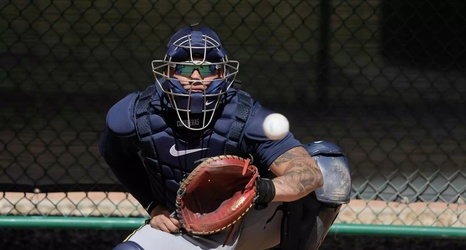Seattle Mariners manager Scott Servais spent parts of 11 seasons and nearly 800 games behind home plate as a catcher with four franchises, mostly in the 1990s.
During that era — one dominated by Hall of Famers Mike Piazza and Ivan Rodriguez — the skills needed at backstop were clearly defined.
"Could you throw guys out, how did you do blocking the ball and could you hit with power?” Servais said. “That’s how the position was evaluated.”
A generation later, those attributes have been joined by a more subtle but equally significant skill: pitch framing. During baseball's data revolution, the fine art of making borderline pitches look like strikes was found to be a game-changing craft — one that could be as impactful as Piazza's power or Rodriguez's arm.
